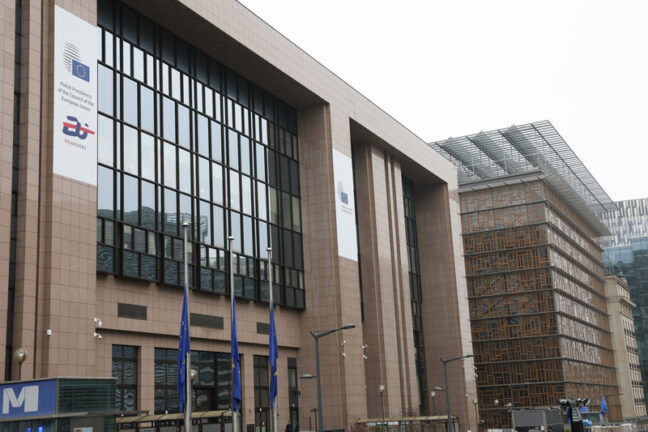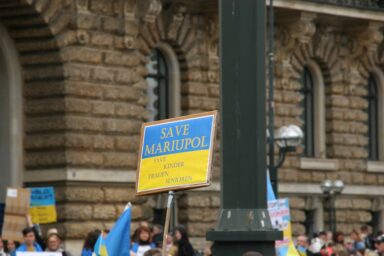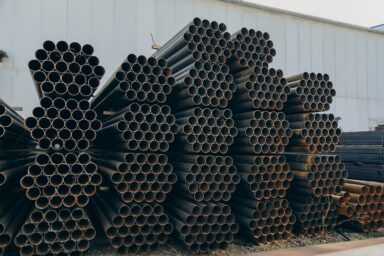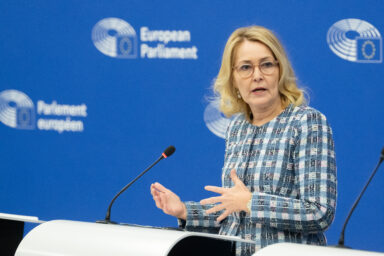The European Council ordered a rapid overhaul of the continent’s defences. Leaders vowed to close capability gaps, boost industry and protect borders, from airspace to undersea cables. Timetables were set, money marshalled and the European Defence Agency tasked with making it happen.
The leaders gathered on 23 October 2025 to press a single point: Europe must be ready for worse. “The European Council confirmed its determination to deliver at pace and at scale on this objective, so that Europe is better equipped to act and deal autonomously, in a coordinated way, and with a 360° approach, with immediate and future challenges and threats.”
The conclusions makes it clear that the shock of recent years has hardened resolve. “Russia’s war of aggression against Ukraine and its repercussions for European and global security in a changing environment constitute an existential challenge for the European Union,” it reads.
Coherent, not disjointed
The Council set practical tasks. It asked member states to lead on priority capability areas and to make them operational, supported by the European Defence Agency. “The European Council calls for member State-led ot operationalise work on all the priority EU-level capability areas, with the support of the European Defence Agency (EDA) and on the basis of a coherent overall approach, building on the Strategic Compass, so that Europe develops the full spectrum of modern capabilities, in full coherence with NATO.” The aim is clear: coherent work, not disjointed projects.
The Union will reduce its strategic dependencies, address its critical capability gaps and strengthen the European defence technological and industrial base accordingly throughout the Union. — European Council
The Council demands speed. Member states must finalise the setting up of capability coalitions by year‑end and move to concrete projects in the first half of 2026. That timetable is tight. It signals a shift from declarations to delivery.
The conclusion also calls for reduced dependencies and for closing critical capability gaps across the Union. “The Union will reduce its strategic dependencies, address its critical capability gaps and strengthen the European defence technological and industrial base accordingly throughout the Union so that it is in a position to better supply equipment in the quantities and at the pace needed.”
You might be interested
Determination confirmed
Border defence became a headline. “The European Council condemns the violation of the airspace of several member states and stresses the importance of ensuring the defence of all EU land, air and maritime borders.” The eastern flank drew particular attention. “The immediate threats on the EU’s Eastern flank and the provision of concrete support to member states need addressing as matters of priority.” But the Council also noted risks elsewhere. “In addition, considering the threats on the rest of the EU borders, the European Council stresses the importance of their defence.”
The Council condemns the violation of the airspace of several member states and stresses the importance of ensuring the defence of all EU land, air and maritime borders. — European Council
Hybrid attacks and infrastructure vulnerabilities feature heavily. “In the light of Russia’s and Belarus’ intensified hybrid attacks and the recent violations of EU airspace, the European Council underscores the importance of close cooperation among Member states to comprehensively strengthen their defence and security capabilities.” The text named energy, digital and undersea systems as priorities for protection. The language was terse and practical — resilience, protection, cooperation.
Air defences and counter‑drone measures become immediate priorities. “To respond to the most immediate needs and threats, work should focus in particular on concrete projects to reinforce member states’ joint efforts to enhance their anti‑drone and air defence capabilities, in a coordinated manner, in particular making full use of the SAFE and EDIP instruments and other relevant existing financial instruments.” That is an operational brief, not a strategic sermon.
Border defence takes centre stage
Space was elevated from a niche concern to a core capability. The Council urged faster joint development of space assets and their protection. “The European Council calls for accelerated joint development of space assets and services that serve security and defence purposes, as well as for the protection of existing assets, including dual‑use assets, given their importance for Europe’s strategic autonomy.” Space is no longer an optional frontier; it is integral to communications, surveillance and command.
Industry and money took centre stage. The Council pressed for pooled demand and standardised requirements to give firms predictability and scale. “The European Council calls on member states to increasingly gear defence investment towards joint development, production, and procurement, with the support of the EDA, as demand aggregation on the basis of standardised requirements and economies of scale are key to providing predictability to industry, lowering costs and fostering interoperability.” It also urged better market access across borders, especially for small and medium firms.
The European Council confirmed its determination to deliver at pace and at scale, so that Europe is better equipped to act and deal autonomously. — European Council
Ukraine received invitation into the industrial fold. “The European Council underlines the importance of close cooperation with Ukraine and of its integration with and contribution to the European defence industry, notably as regards defence innovation and cutting-edge defence technology.” That line turns the conflict’s humanitarian and political dimensions into an economic and technical partnership.
Money for industry
The Council tasked institutions with oversight. It backed an annual defence readiness report prepared by the EDA, aided by the Commission and the High Representative. “The report will take stock of progress towards closing the existing capability gaps, building on the Coordinated Annual Review on Defence (CARD).” It also called on the Council to strengthen the EDA so it can better coordinate capability development, research and acquisition — and to report on measures by the end of 2025.
Financing measures moved from hint to plan. The Council reviewed options to increase defence spending and welcomed progress on instruments that ease investment. “It welcomes the progress made since March 2025 with regard to the activation of the national escape clauses, the mid‑term review of the EU cohesion policy, and the SAFE and EDIP instruments.” It also urged the European Investment Bank to step up support and explore ways to help start‑ups scale.
Innovation and mobility finished the agenda. “The European Council underlines the importance of innovative technologies and disruptive solutions and calls on the Commission to present a roadmap for defence industry transformation.” It also reiterated the need for better military mobility across the Union.
From hint to plan
The Council pitched its work as complementary to NATO, not a substitute. “A stronger and more capable European Union in the field of security and defence will contribute positively to global and transatlantic security and is complementary to NATO, which remains, for those States that are members of it, the foundation of their collective defence.” That caveat was as much political as legal.
The conclusion end by promising continued oversight. “The European Council will continue to provide strategic guidance and review progress on the implementation of the defence readiness objective.” The line underlines a simple fact: Europe has set a deadline and an agenda. The hard part will be the months ahead — turning plans into ships, systems and trained forces.











